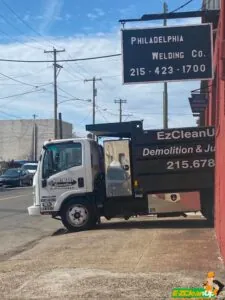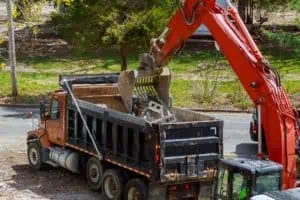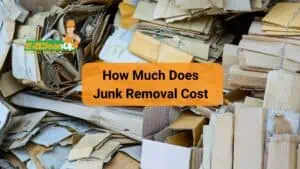Replacing your deck without spending a lot involves assessing its condition, opting for cost-effective materials, and simplifying the design to reduce costs. DIY installation saves money, but consider professional help for complex tasks. Regular maintenance is also crucial to making it last.
If you want to learn more about cheap deck replacement and how to ensure your deck remains structurally sound and visually appealing, read our guide below.
Evaluating Deck Condition
Before you can decide whether to repair or replace your deck, you must first assess the condition of what you have. Identifying when your deck requires a replacement rather than a mere repair is crucial for ensuring safety and maintaining your home’s value.
Signs Your Deck Needs Replacement
A deck that shows significant signs of wear and tear may need to be replaced to avoid potential hazards and further costly repairs. Here’s how to tell if it’s time to consider replacing your deck:
- Extensive Surface Damage: Look for widespread issues like cracked, splintered, or warped boards. If these problems are not localized but affect a large portion of the deck, this suggests that a repair might not be sufficient.
- Compromised Structural Integrity: Key structural components such as posts, joists, and railings should be inspected for stability. Loose railings, rotting posts, or deteriorated joists are indicators that the deck’s structural integrity is compromised. This is a clear indication that the deck is unsafe.
- Age and Material Degradation: The lifespan of your deck depends significantly on the materials used. Wood decks generally last 10-15 years, depending on the climate and upkeep. Decks reaching this age may require replacement. Conversely, composite decks can last 20-30 years. They offer a longer lifespan due to their durable nature.
- Signs of Pest Damage and Rot: Termites, pests, and moisture can cause irreversible damage to wood, leading to rot and decay. Visible signs of infestation or areas where the wood has become soft and spongy are clear indicators that the deck may require replacement rather than repair.
- Safety Hazards: Finally, consider the safety of your deck. If there are any safety hazards, such as unstable footing, shaky railings, or loose boards, these not only pose a risk to users but also signal deeper structural issues that might require a complete deck replacement.
Cost Comparison: Repair vs. Replacement
Deciding whether to repair or replace your deck involves assessing both immediate costs and long-term value. This decision can significantly impact your home’s safety and finances.
Initially, repairs may seem cost-effective, especially if the damage appears minimal. On the other hand, replacing a deck can be a considerable investment but might be more cost-effective in the long run.
It’s crucial to consider how much longer your current deck can last without major repairs and compare this to the lifespan of a new deck. If the cost of repairs approaches or exceeds 50% of the cost of a replacement, it generally makes sense to replace rather than repair.
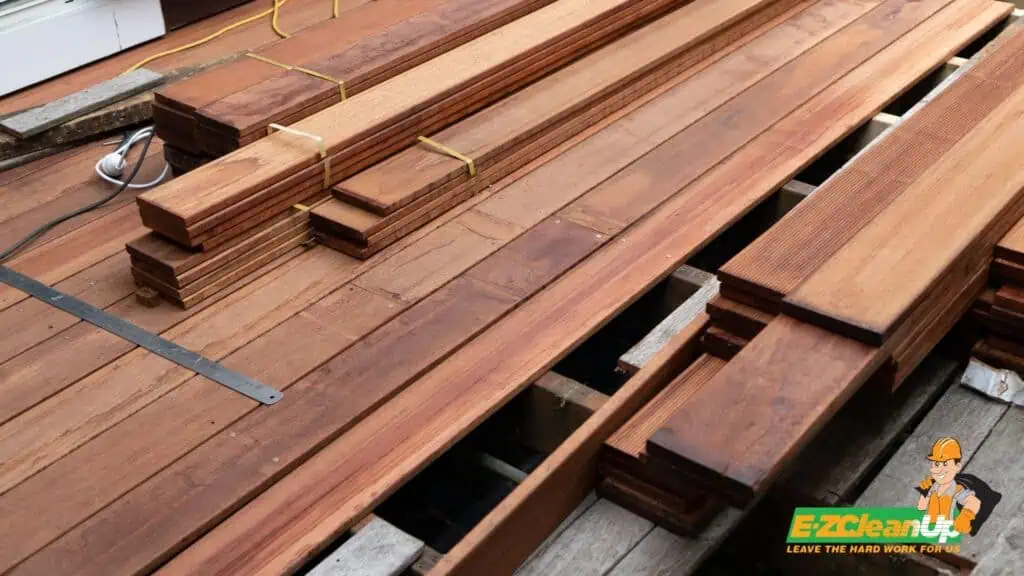
Choosing Materials
When choosing materials for deck construction, it’s important to balance cost and performance.
Pressure-treated wood is widely recognized for its affordability and effective resistance to rot, moisture, and insects. These make it a cost-effective option for many homeowners. It typically costs between $1.50 and $4.50 per square foot, which makes it one of the most economical choices.
Composite materials, while generally more expensive upfront—ranging from $4 to $13 per square foot—offer significant long-term benefits. Composites are valued for their durability and low maintenance requirements. They don’t require the frequent stain or seal treatments that wood does. This can lead to lower overall lifecycle costs despite the higher initial investment.
Benefits of Sustainable and Durable Materials
Choosing sustainable materials like composite decking not only supports environmental conservation efforts but also offers increased durability and longevity. Many composite decking options include a high percentage of recycled content
They reduce the demand for virgin materials and offer a greener solution. Additionally, composites resist weathering, pests, and moisture more effectively than traditional wood. They can last over 25 years with minimal upkeep.
For those interested in wood, black locust presents a highly durable and sustainable option. Known for its rapid growth and excellent resistance to rot and insects, black locust is a strong candidate for eco-conscious projects. This is particularly useful in settings prone to harsh environmental conditions.
Design Considerations
To minimize the expenses associated with building a deck, one effective strategy is to simplify the design. Opting for basic geometric shapes like rectangles and using standard lumber lengths can significantly reduce material waste and labor costs.
By designing your deck to accommodate standard lumber sizes such as 8, 12, and 16 feet, you can avoid the extra costs associated with cutting and custom fitting. It also streamlines the construction process and reduces overall expenses.
Importance of Planning for Add-ons
When designing your deck, it’s essential to consider any additional features early in the planning stage. Integrating elements like lighting and railings from the outset can prevent costly modifications later on.
Planning for these add-ons in advance allows for more efficient integration into the overall deck structure, potentially saving on labor and materials. For instance, wiring for lighting should be incorporated during the initial framing phase to avoid the disruption and additional cost of retrofitting.
If you’re seeking design inspiration or need practical tips on choosing the right materials and layout for your deck, you could start by sketching out your ideas. You can also look for design inspiration on Pinterest or visit this website to explore a variety of stunning deck designs that can help you visualize different styles and layouts that might suit your space.
Construction Techniques: DIY vs. Professional
DIY installations can offer bigger savings, particularly in labor costs. They also provide greater control over project timelines and design details. However, they require a good level of competence with tools and construction techniques to ensure safety and quality.
On average, DIY can save between 50% and 60% on the total cost compared to professional installation, especially if you have the necessary tools and experience.
Professional installation, while more costly, brings expertise, efficiency, and peace of mind through warranties and high-quality results. Labor costs for professional deck installations range from $15 to $35 per square foot. The costs vary by location, complexity, and materials used.
Professionals ensure that the installation adheres to local building codes and is structurally sound, which is crucial for safety and longevity. They can also handle complex designs and challenging installation environments more effectively.
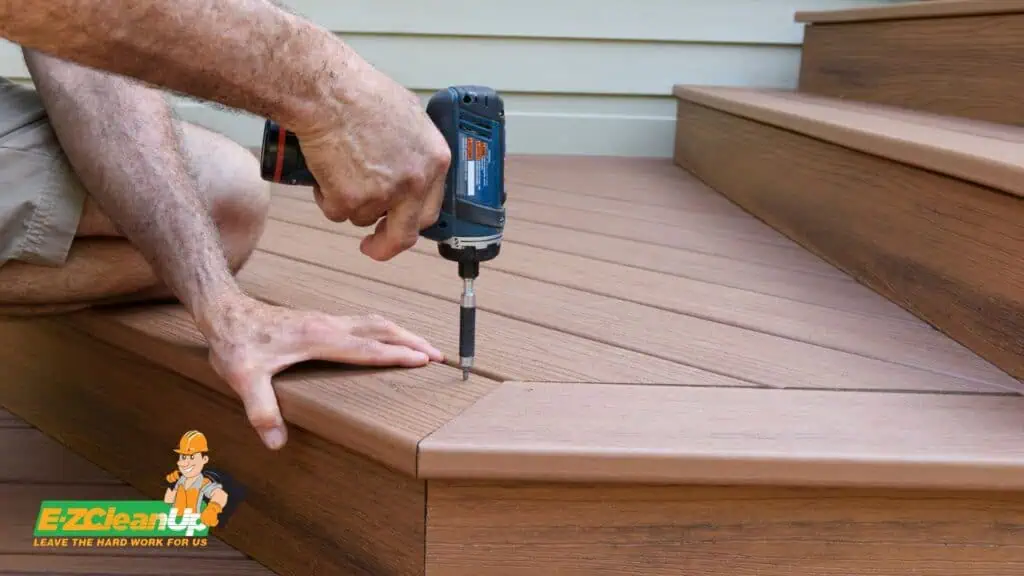
Essential Tools and Resources
When building a deck, whether DIY or professionally, the right tools are essential. For DIYers, purchasing or renting tools can be a significant decision.
The basic tools needed include a circular saw, drill, hammer, tape measure, and level. For more specialized tasks, you might need a power sander, a sawzall, and various woodworking tools.
Renting tools is a cost-effective option for one-time use or for expensive tools that you won’t need regularly. It reduces the upfront cost and eliminates the need for long-term storage and maintenance.
However, if you anticipate frequent use or undertake multiple projects, investing in these tools might be more economical in the long run. The cost of renting a set of basic deck-building tools can range from $50 to $150 per day.
Maintenance and Longevity
Maintaining your deck is crucial for both its appearance and longevity. Regular cleaning should include sweeping to remove debris and washing with a mild soap solution or a specialized deck cleaner to prevent mold and mildew buildup.
Annual inspections are essential to check for any signs of damage, such as rot, loose boards, or pest infestation. Specific areas to focus on include the ledger board, stairs, and railings.
It’s also recommended to clean your deck thoroughly at least once a year using a soft brush and appropriate cleaners to avoid damaging the wood. For decks in humid or shaded areas, more frequent cleaning may be necessary to prevent mold growth.
After cleaning, applying a water-repellent sealant can protect the deck from moisture and UV damage, which are common causes of wear and decay.
Enhancing Longevity with Proper Installation Techniques
Using joist protection such as caps or sealant helps prevent moisture penetration that can lead to rot. Ensuring all fasteners and nails are secure and made from suitable materials like stainless steel, especially in saltwater environments, will prevent corrosion and maintain structural integrity.
Additionally, it’s important to regularly check and maintain the hardware of your deck, including screws, nails, and bolts, to ensure they are tight and not rusted. Replace any damaged boards promptly to avoid further deterioration.
For added protection, sealing the deck with a high-quality sealant every 2-3 years is recommended to repel water and mold. This will further extend the deck’s life.
You might also be interested in How to Demo a Deck >>
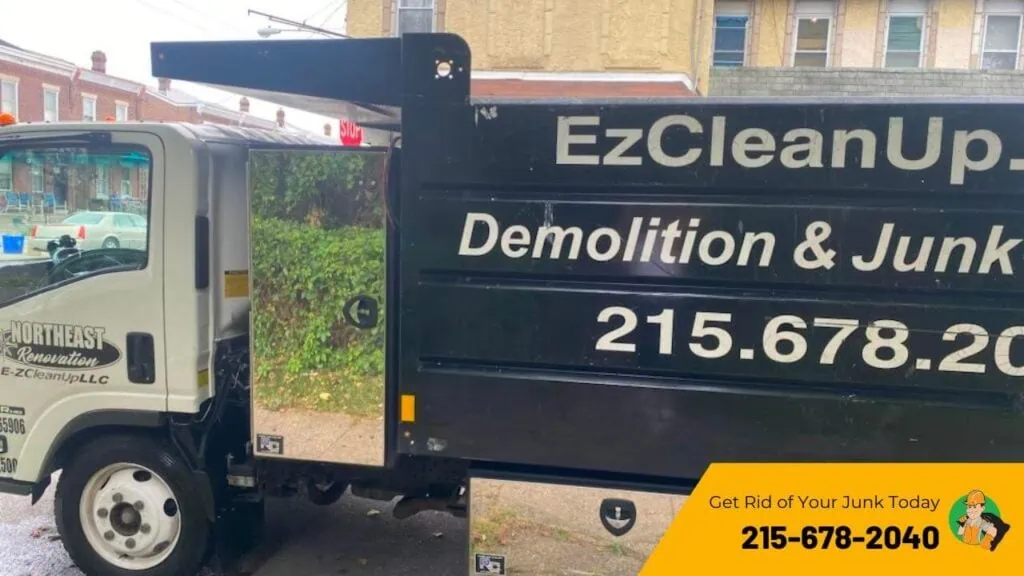
Clean Up with EZ After Your Deck Revamp
Replacing your deck is a major upgrade, but it also generates a lot of waste. Old wood, screws, and possibly even concrete need to be dealt with properly to fully appreciate your new setup.
EZ CleanUp offers specialized deck removal and junk removal services in Philadelphia. We can help you transition smoothly from old to new. Our team ensures that all waste is not only removed but also disposed of in an environmentally responsible manner.
Reach out to us for seamless deck & debris removal!


